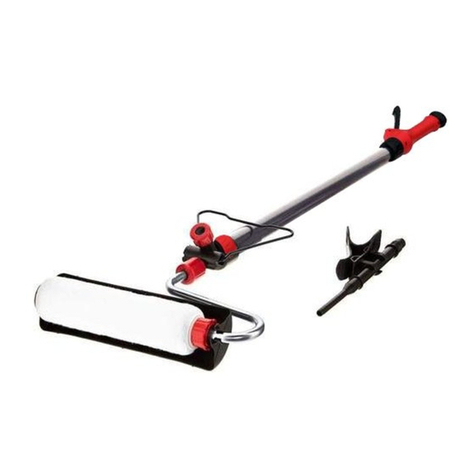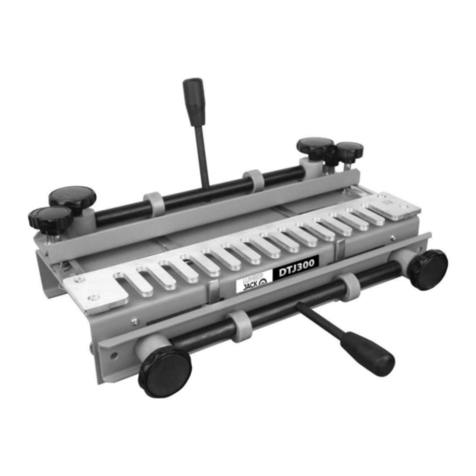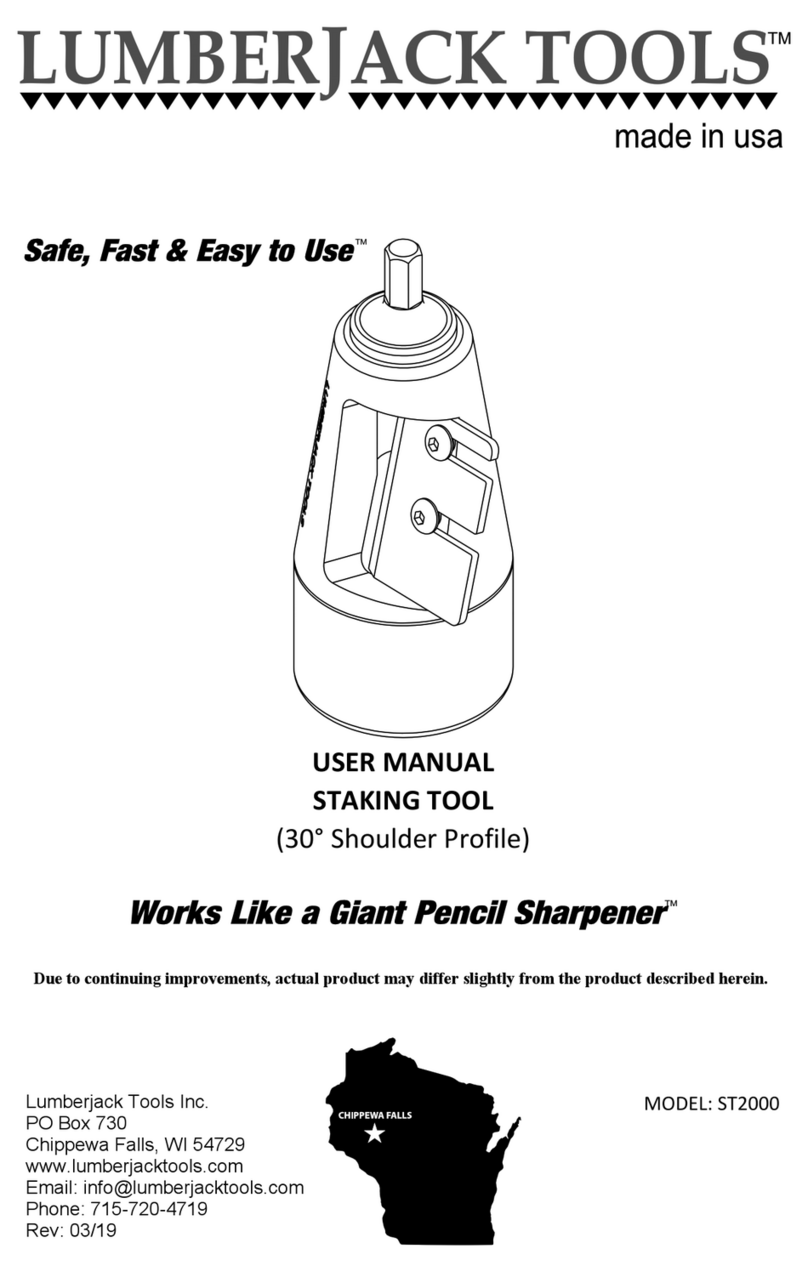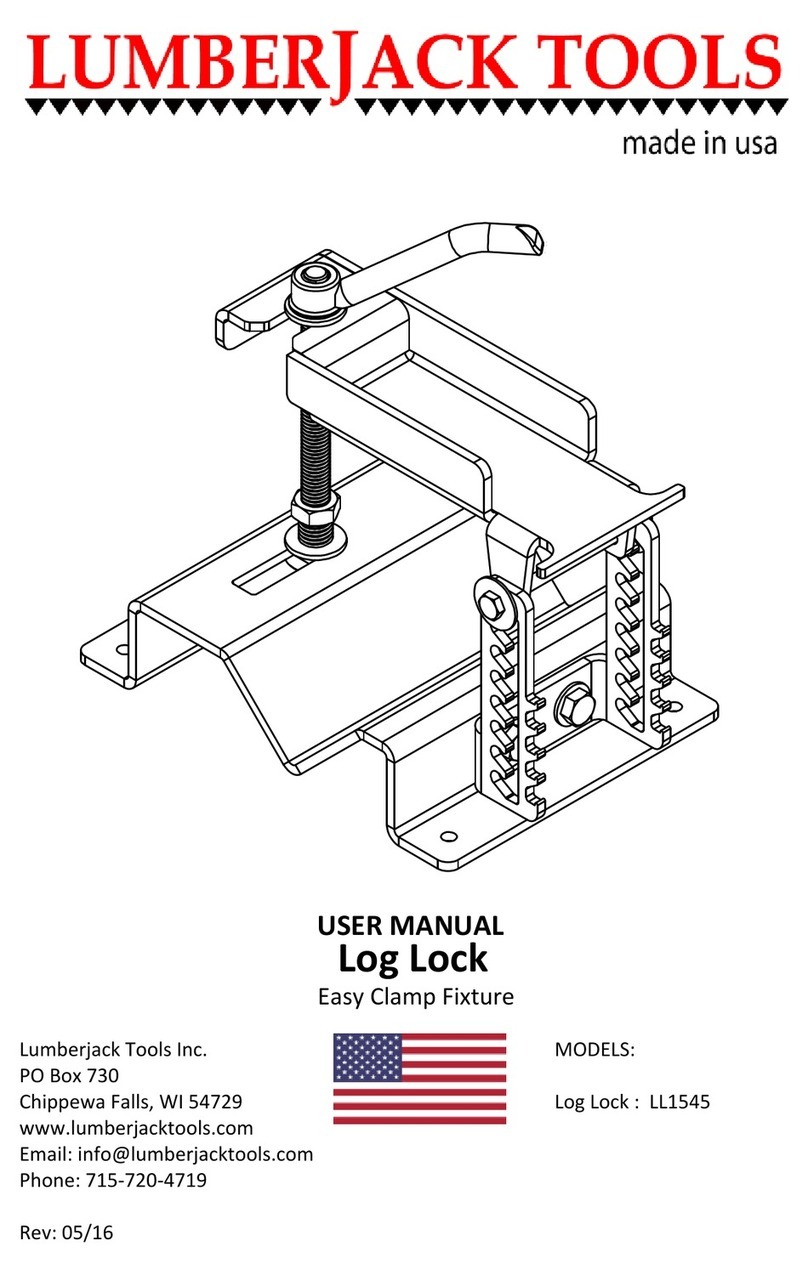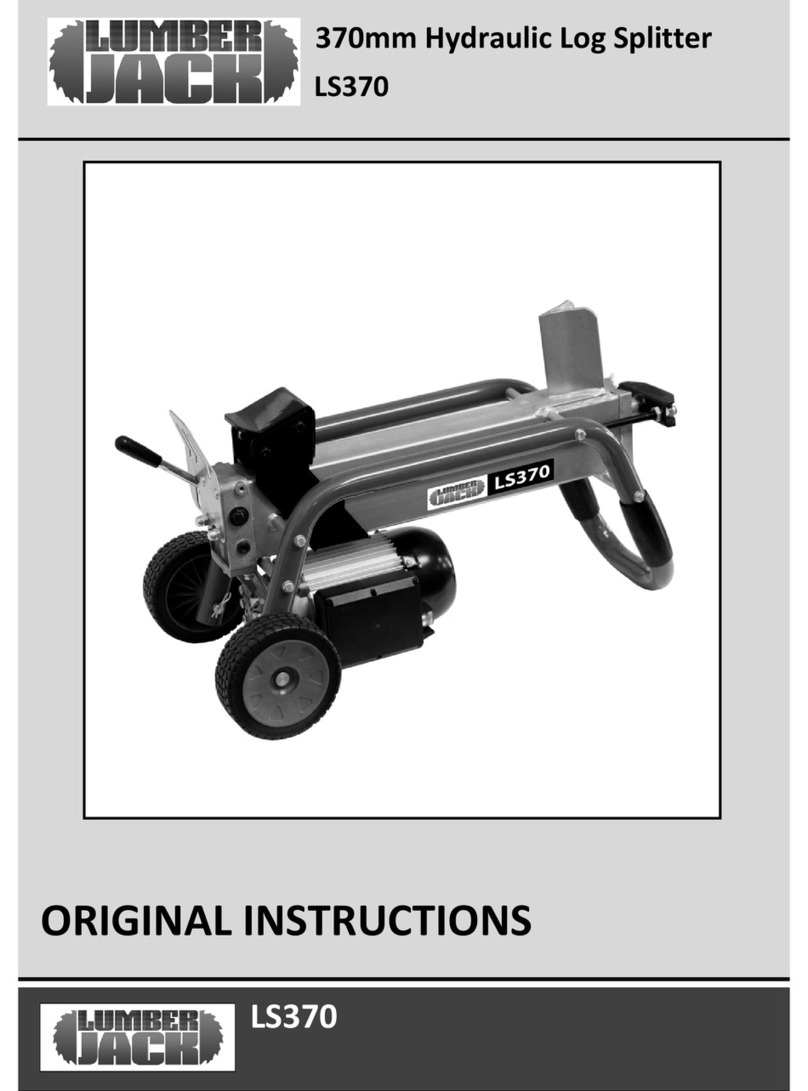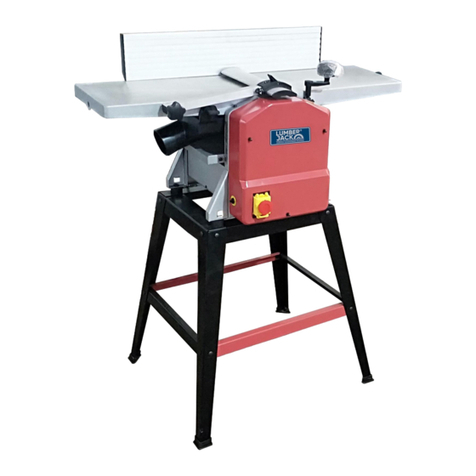Curved Joints –this uses the same
technique as the angled joint, but the angles
will be shallower (5° to 15°). The overhang will
need to be removed as previous.
Mitred Corner Joints –joining two pieces
with 45° mitres with the pocket jig is not
advisable, however a 90° change of direction
can be created by using a bevel‐jointing piece.
The joint comprises of a 90° infill piece with
45° mitres on both sides.
Edge to Edge Joints –allows narrow strips
to be jointed to create wider boards such as a
table top.
Edging of countertops or shelving –a
quick and easy way to join edging onto
plywood, MDF or particle board shelves.
Jig making –very useful for jig making and
temporary assembly operations. Ideal for
routing jigs.
Post and Rail Joints –pocket holes allow
strong table and chair joints. For fitting table-
tops to rails, the rails will need to be pocket
hole drilled. To allow for the movement of the
timber as it expands and contracts the hole
must be slightly over size.
This is achieved by lifting the rail about 3mm
off the base of the jig. This should allow the
pilot tip of the drill to break through the end of
the timber, giving the screw space for some
movement. Alternatively move the rail
sideways slightly to drill another pocket hole
(interlocking) allowing a slot for the screw.
Framed Panel (Cabinet) Joints –pocket
holes can be used for almost all framed
cabinet carcass construction.
Maintenance and Service
–Before each use inspect the general
condition of the machine. Check for loose
screws, misalignment or binding of moving
parts, cracked or broken parts, and any other
condition that may affect its safe operation.
–Each day remove all sawdust and debris
from the jig with a soft brush, cloth or vacuum.
Do not use solvents or caustic agents to clean
the jig.
–Periodically lubricate the holes in the guide
columns with PTFE dry lubricant
